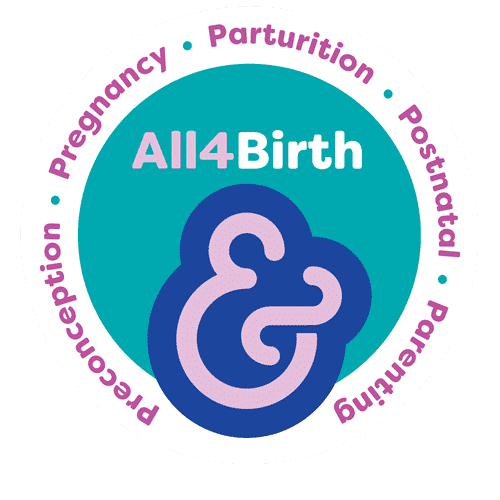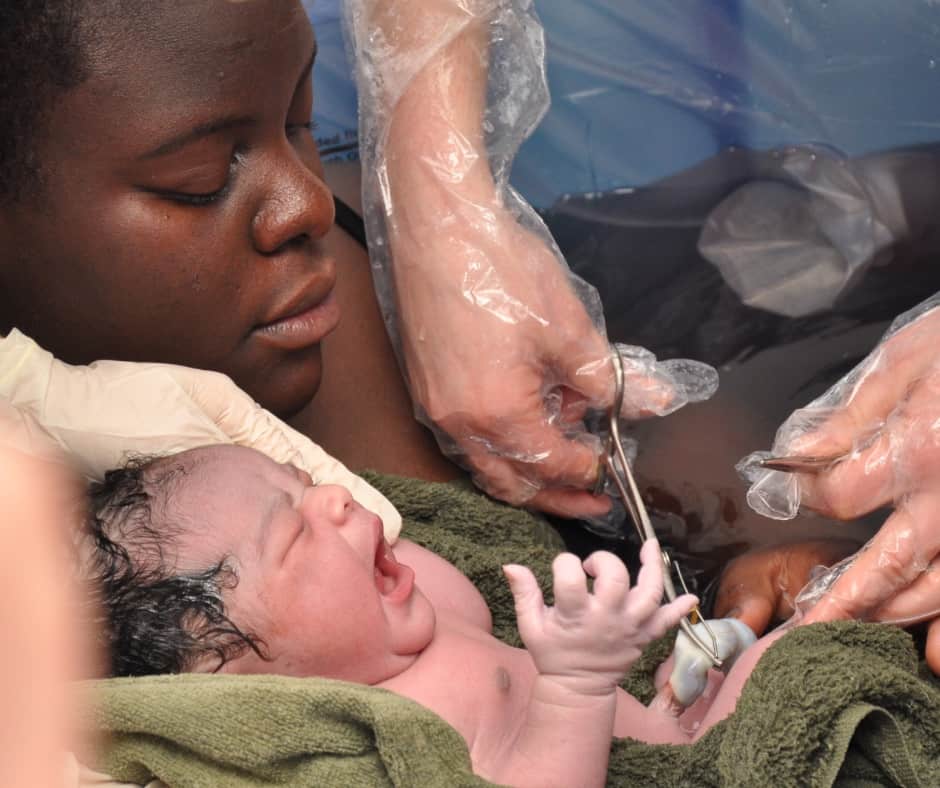Abbie Tomson
Midwife MSc, BSc, Yoga Teacher, Project Lead at All4Birth
@enevlorel @All4Birth
Summary
Preterm birth, defined as birth before 37 weeks of gestation, remains a significant concern and is associated with substantial morbidity and mortality. In the UK, considerable efforts have been made to better understand and manage preterm births, leading to the development of various care bundles and guidelines. This article delves into the current knowledge, research, and evidence surrounding preterm birth, with a focus on UK-specific initiatives such as the Saving Babies’ Lives Care Bundle Volume 3 and the Perinatal Excellence to Reduce Injury in Premature Birth (PReCePT) program.
Current Knowledge and Statistics
Preterm birth affects approximately 7-8% of pregnancies in the UK, with significant implications for neonatal health. Babies born prematurely are at higher risk of respiratory distress syndrome, infections, neurological impairments, and long-term developmental issues. Understanding the causes of preterm birth is complex, with factors ranging from maternal health conditions, such as hypertension and diabetes, to lifestyle factors like smoking and stress.
Research and Evidence
Extensive research in the UK has aimed to identify risk factors and develop effective interventions to prevent preterm births. Key areas of focus include:
- Predictive Biomarkers and Screening: Researchers are investigating biomarkers that could predict the risk of preterm birth. Studies on cervical length measurement and fetal fibronectin testing have shown promise in identifying women at higher risk.
- Interventions and Treatments: Progesterone supplementation, cervical cerclage, and lifestyle modifications have been studied extensively. Meta-analyses and randomised controlled trials have provided evidence supporting the use of progesterone in women with a history of preterm birth or short cervical length.
- Antenatal Care Improvements: Enhancing antenatal care through regular monitoring and early intervention has shown positive outcomes. The introduction of continuity of care models, where a single midwife or a small team provides care throughout pregnancy, has been associated with reduced preterm birth rates.
Saving Babies Lives Care Bundle Volume 3
The Saving Babies Lives Care Bundle (SBL) is a comprehensive initiative by NHS England aimed at reducing stillbirths and early neonatal deaths, with significant emphasis on preterm birth prevention. Volume 3, released in 2021, builds on previous iterations with updated evidence and practices. Key elements include:
- Reducing Smoking in Pregnancy: Smoking is a significant risk factor for preterm birth. The care bundle emphasizes systematic carbon monoxide screening and referral to smoking cessation services.
- Risk Assessment and Surveillance: The bundle advocates for the use of combined screening tests to assess the risk of preterm birth and implement appropriate surveillance for high-risk pregnancies.
- Optimising Fetal Growth and Well-being: Regular monitoring of fetal growth and well-being through ultrasound and Doppler assessments is crucial. Early identification of growth-restricted foetuses allows for timely intervention.
- Improving Awareness and Management of Preterm Labour: Educating healthcare professionals and expectant mothers about the signs of preterm labour and the importance of timely intervention is a cornerstone of this bundle.
Perinatal Excellence to Reduce Injury in Premature Birth (PReCePT)
PReCePT is another critical initiative in the UK, aiming to reduce brain injury in premature infants by increasing the use of magnesium sulphate in preterm deliveries. Magnesium sulphate has been shown to significantly reduce the risk of cerebral palsy when administered to women at risk of preterm birth before 30 weeks of gestation. Key components of PReCePT include:
-
- Education and Training: Providing comprehensive training to healthcare professionals on the benefits and administration of magnesium sulphate.
- Implementation and Auditing: Ensuring magnesium sulphate administration becomes a standard practice across maternity units, with regular audits to monitor compliance and outcomes.
- Support and Resources: Offering support materials and guidelines to assist healthcare providers in implementing the protocol effectively.
The Future of Preterm Birth Management
Ongoing research and implementing evidence-based care bundles are critical to improving outcomes for preterm infants in the UK. Future directions include:
- Advancing Predictive Technologies: Developing more accurate predictive tools through genetic research and advanced biomarker studies.
- Personalised Care Plans: Tailoring interventions to individual risk profiles to optimise outcomes.
- Continued Education and Training: Ensuring that all healthcare providers are up-to-date with the latest research and guidelines to provide the best care possible.
Conclusion
Preterm birth remains a significant challenge, but through comprehensive initiatives like the Saving Babies’ Lives Care Bundle Volume 3 and PReCePT, the UK is making strides in improving outcomes for premature infants. Continued research, adherence to evidence-based practices, and collaboration across healthcare disciplines are essential in the fight to reduce preterm births and their associated complications. By staying informed and advocating for the best possible care, we can help ensure healthier futures.
Links to other resources
 Websites
Websites
Tommy’s – A UK-based charity providing research, guidance, and support for reducing preterm births
Best Beginnings – Offers resources for parents of premature babies, including the Small Wonders video series.
Healthier Together – Provides NHS-backed advice on preterm birth prevention and management.
NICE Guidelines on Preterm Labour and Birth
BAPM Framework for Perinatal Management of Extreme Preterm Birth
 Film Audio and Apps
Film Audio and Apps
From Preterm Birth to Thriving Baby – Shares a real-life journey of a premature baby and the care provided by NHS staff.
WHO Recommendations for Care of Preterm or Low-Birth-Weight Infants – Presents WHO guidelines for preterm infant care.
 Books
Books
Evidence-Based Global Health Manual for Preterm Birth Risk Assessment
References:
- Bliss. (n.d.). Prematurity statistics in the UK. Retrieved February 18, 2025, from https://www.bliss.org.uk/research-campaigns/neonatal-care-statistics/prematurity-statistics-in-the-uk
- Sotiriadis, A., Papatheodorou, S., Kavvadias, A., & Makrydimas, G. (2010). Transvaginal cervical length measurement for prediction of preterm birth in women with threatened preterm labour: A meta-analysis. Ultrasound in Obstetrics & Gynecology, 35(1), 54–64. https://doi.org/10.1002/uog.7457
- Conde-Agudelo, A., Romero, R., & Hassan, S. S. (2010). Transvaginal sonographic cervical length for the prediction of spontaneous preterm birth in twin pregnancies: A systematic review and meta-analysis. American Journal of Obstetrics and Gynecology, 203(2), 128.e1–128.e12. https://doi.org/10.1016/j.ajog.2010.02.064
- Sandall, J., Soltani, H., Gates, S., Shennan, A., & Devane, D. (2016). Midwife-led continuity models versus other models of care for childbearing women. Cochrane Database of Systematic Reviews, (4), CD004667. https://doi.org/10.1002/14651858.CD004667.pub5
- Jarde, A., Lutsiv, O., Park, C. K., Barrett, J., Beyene, J., Saito, S., & McDonald, S. D. (2017). Effectiveness of progesterone supplementation during pregnancy in preventing spontaneous preterm birth: A meta-analysis of randomized controlled trials. Journal of Obstetrics and Gynaecology Canada, 39(6), 1–15. https://doi.org/10.1016/j.jogc.2016.12.021
- Norman, J. E., Marlow, N., Messow, C. M., Shennan, A., Bennett, P. R., Thornton, S., Robson, S. C., Marlow, N., McConnachie, A., Petrou, S., Sebire, N., Lavender, T., & Whyte, S. (2016). Vaginal progesterone prophylaxis for preterm birth (the OPPTIMUM study): A multicentre, randomised, double-blind trial. The Lancet, 387(10033), 2106–2116. https://doi.org/10.1016/S0140-6736(16)00350-0
- NHS England. (2023). Saving babies’ lives version three: A care bundle for Reducing Perinatal Mortality. https://www.england.nhs.uk/publication/saving-babies-lives-version-three/
- Office for National Statistics. (2023). Birth characteristics in England and Wales: 2022. https://www.ons.gov.uk/peoplepopulationandcommunity/birthsdeathsandmarriages/livebirths/bulletins/birthcharacteristicsinenglandandwales/2022
- Tommy’s. (n.d.). Premature birth statistics. Retrieved February 18, 2025, from https://www.tommys.org/pregnancy-information/premature-birth/premature-birth-statistics
- Office for National Statistics. (2022). Birth characteristics in England and Wales: 2021. https://www.ons.gov.uk/peoplepopulationandcommunity/birthsdeathsandmarriages/livebirths/bulletins/birthcharacteristicsinenglandandwales/2021
- NHS Digital. (2024). NHS Maternity Statistics, England, 2023-24: Births. https://digital.nhs.uk/data-and-information/publications/statistical/nhs-maternity-statistics/2023-24/births













